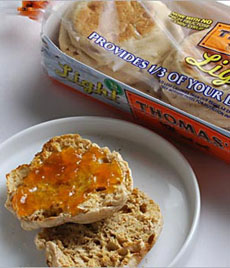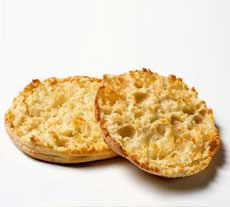Thomas’ “toaster crumpet” preserved the nooks and crannies lost in knife-slicing and made it easier to toast. (Fork splitting is a thing of the past: Today in manufacturing, the muffins are run past wheels with Roman spear points that pierce the sides. “Nooks and crannies,” by the way, is a term popularized by a Thomas’s advertising campaign from the 1980s.) Toaster crumpets caught on with Manhattan hoteliers as a tasty alternative to toast. Their popularity grew quickly, expanding to The Bronx and Queens. Thomas expanded to a second bakery around the corner at 337 West 20th Street. That building, now a co-op apartment residence, is known as “The Muffin Building,” and a 2006 basement renovation uncovered the 15' x 20' oven used by the bakery.
How secret is the recipe? According to an article in The New York Times, only seven people know the trade secret that produces the nooks and crannies. And it isn’t easy to figure out: The article cites a baking industry consultant who “spent a good part of the 1980s and 1990s” trying to “break the code” for two competitors. Other experts say that the basic technique is widely known: English muffin dough is very watery. When baked at a high heat, the water evaporates quickly and leaves large air pockets. Yet, nobody seems to have as many pockets as Thomas’.
Continue To Page 3: Wolferman’s English Muffins
Lifestyle Direct, Inc. All rights reserved. Photos are the copyright of their respective owners.
|

The Nibble Blog
The Latest Products, Recipes & Trends In Specialty Foods
The gourmet guide you’ve been waiting for. New food adventures are served up daily. Check it out!

Food Glossary
Our Food Directories Are "Crash Courses" In Tasty Topics
Your ultimate food lover’s dictionary packed full of information and historical references. Take a look!

Food History
Let the journey begin!
Learn about the history Of 1,000+ Favorite Foods & Beverages Let’s explore the history of your favorie goods together.Let the journey begin!


